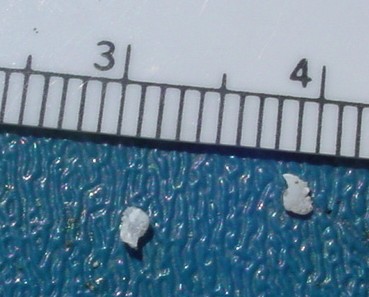How to Distinguish from Similar Species: The opalescent or common Pacific squid Doryteuthis opalescens is more common in California shallow waters but is smaller (mantle length to 19 cm). The North Pacific Giant Squid Moroteuthis robusta also grows very large (up to 230 cm mantle length) but the mantle contains many fine longitudinal ridges and the fins are attached along more than half the mantle length. The tentacle clubs have 15-18 pairs of hooks in two rows along with the suckers. It is also oceanic but occasionally washes up on our shores. The only cephalopod this large commonly seen near Washington shores is the Pacific Giant Octopus, Enteroctopus dofleini, which has only 8 arms, does not have the elongated mantle nor mantle fins, and spends much of its time benthically.
Geographical Range: This species is common much farther south. Several times in the past decade, however (e.g. 2004, 2008), large numbers of individuals have appeared off the Washington Coast and as far north as Kodiak, Alaska. Johnson and Snook give the range as Monterey, CA to San Diego.
Depth Range: 0-1200 m
Habitat: Oceanic
Biology/Natural History: This species is a diurnal vertical migrator from warm waters. It is only occasionally seen along our coast.
Ramos-Castillejos et al. (2010) examined the paralarvae of this species off the west coast of Baja California. The paralarvae are very similar in morphology to those of Sthenoteuthis oualaniensis. However, Ramos-Castillejos et al. found several size metrics in which the paralarvae differed. Paralarvae of Dosidicus gigas also had no intestinal photophores.
Note:
One of the most iconic photos of Ed Ricketts, the famous marine
biologist and collector at Cannery Row, Monterey, CA, is of him holding
a specimen of Dosidicus gigas. See, for example, Joel Hedgpeth (ed),
1978; The Outer Shores Part 1: Ed Ricketts and John Steinbeck Explore
the Pacific Coast. Mad River Press, page 7.
| Return to: | |||
| Main Page | Alphabetic Index | Systematic Index | Glossary |
References:
Dichotomous Keys:Carlton, 2007
Jorgensen, 2009
General References:
Johnson
and Snook, 1955
Norman, 2003
Scientific Articles:
Ramos-Castillejos,
Jorge, César A. Salinas-Zavala, Susana Camarillo-Coop, and Luis
M. Enríquez-Paredes, 2010. Paralarvae of the jumbo
squid, Dosidicus
gigas. Invertebrate Biology 129:2 pp.
172-183.
Web sites:
General Notes and
Observations: Locations,
abundances, unusual behaviors:
The photos below were taken by Kirt Onthank, of one of many squid which
were captured by fishermen at Ocean Shores, WA in 2008.

This view shows the 8 arms and 2 tentacles
characteristic of squids. Photo by Kirt Onthank
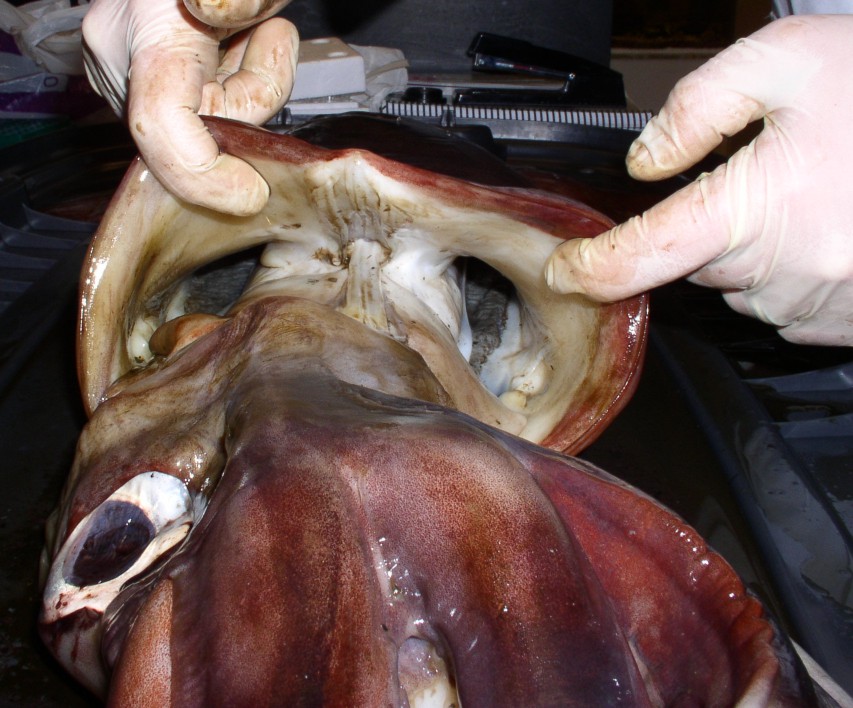
This view shows the attachment along the dorsal margin of the mantle.
Photo by Kirt Onthank, 2009

The ventral margin of the mantle
is not tightly attached to the body. Photo by Kirt Onthank,
2009
When the mantle cavity is opened the two gills can be readily
seen.
In the photo above, the opening to the mantle cavity is to the
left.
Water is sucked into the rear of the mantle cavity (to the right), then
blown back out across the featherlike gills which can be seen above and
below. The visceral mass is visible between the
gills. This
individual washed up on a beach at Seaside, Oregon, so there is some
sand
in the gills. Photo by Dave Cowles, July 2009
This closer view shows the esophagus extending to from the left to
the spiral cecum and stomach on the right. Photo by Dave
Cowles,
July 2009
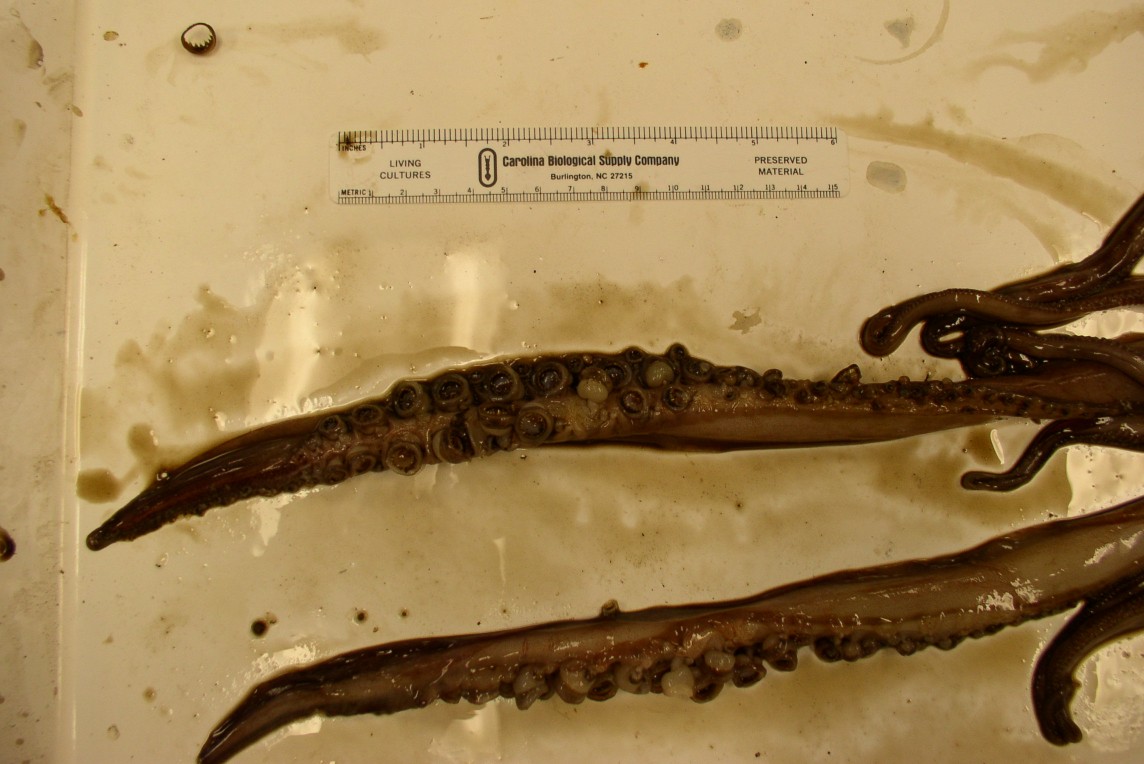
The tentacle
clubs
have suckers with no teeth. Notice the toothed ring from
another
(arm) sucker on the upper left. Also notice that the proximal
part
of the tentacle
(to
the right) is not covered by suckers. Photo by Kirt Onthank,
2009
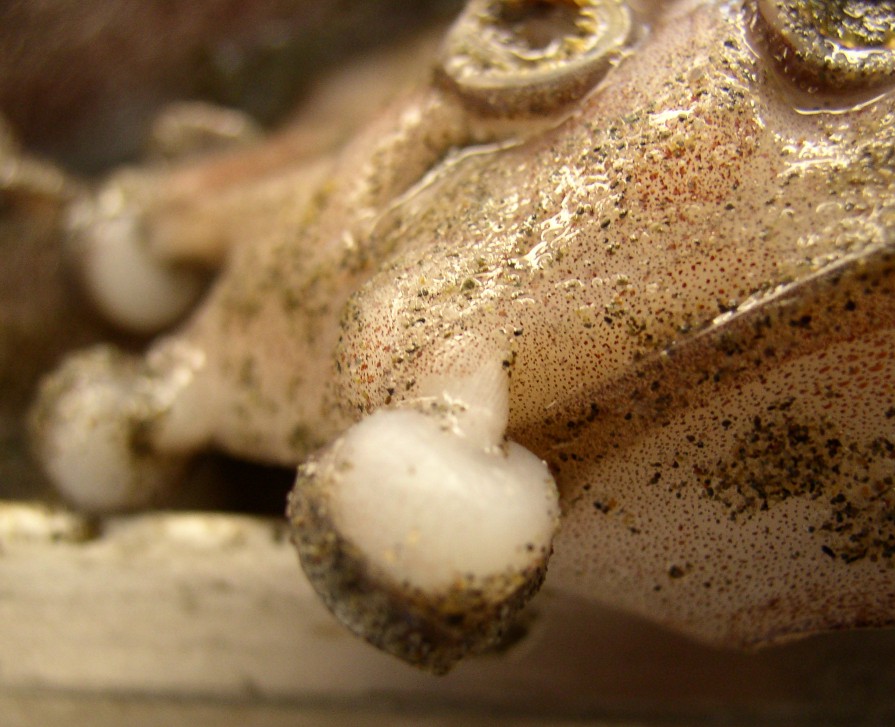
The suckers are on pedicels (stalks). Photo by Kirt Onthank
2009
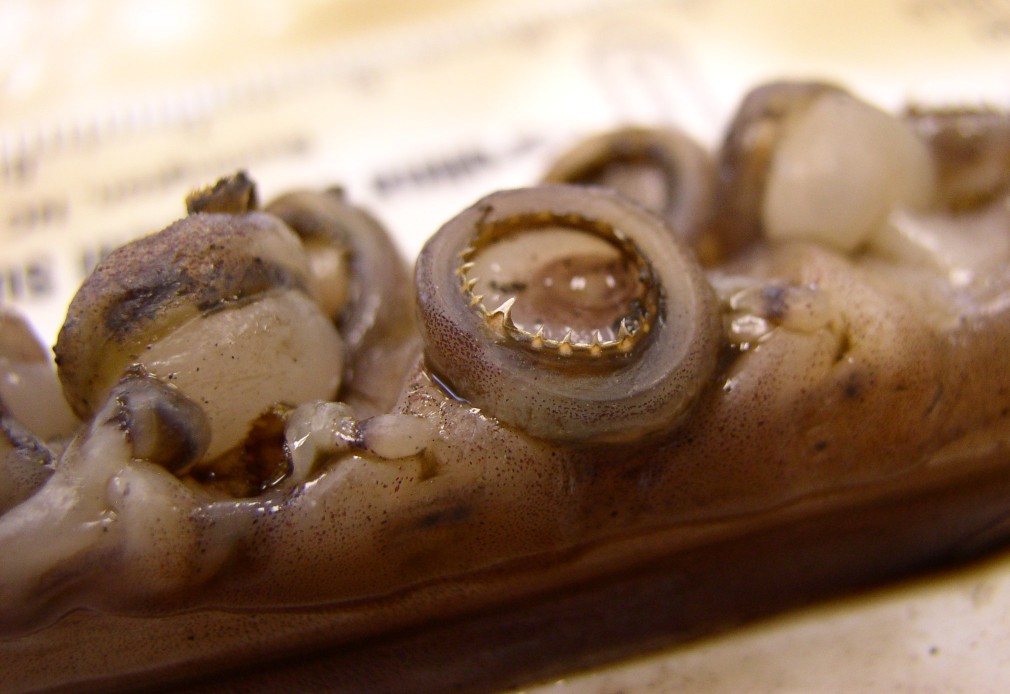
Some of the suckers contain a ring of teeth. The scale in the
background is millimeters. Photo by Kirt Onthank, 2009
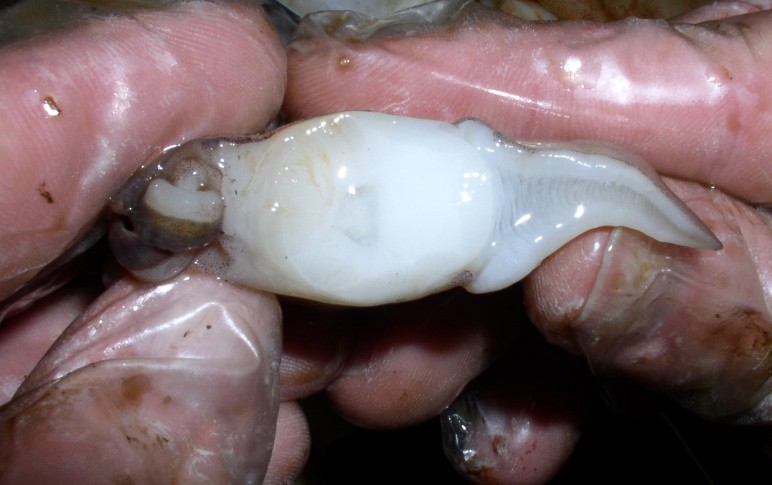
The arms are angular in cross section. Photo by Kirt Onthank,
2009
The beak appears similar to a parrot's beak. The roots of each beak, however, extend well back into the buccal mass (the white mass of muscle around the beaks here), becoming wider, softer, and thinner as they go. The smaller beak (on the right above) is dorsal. Between the beaks is the radula and the salivary papilla. The esophagus passes back through the heavy, muscular buccal mass to the stomach. Photo by Dave Cowles, July 2009
Here is a view of the animal's otoliths. The scale is millimeters, with centimeters numbered. Photo by Dave Cowles, July 2009
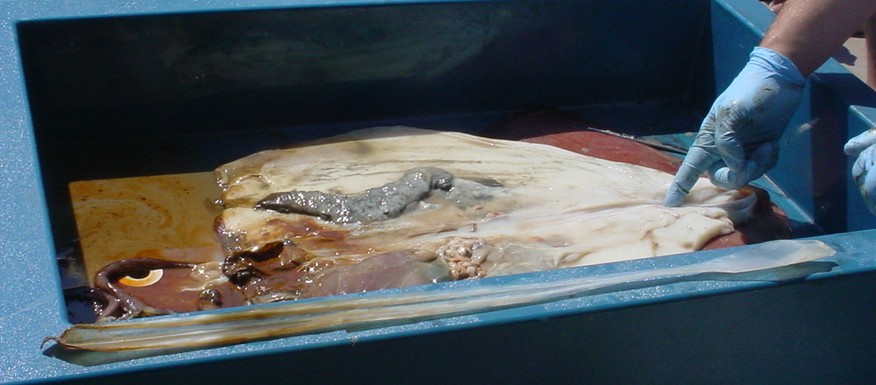
As with all squid, Dosidicus gigas has an internal, flexible strengthening skeleton or "pen". In this view the pen has been removed from the animal (anterior is to the right) and set on the side of the tank. The spoon-like structure at the left fits within the posterior tip of the animal. Photo by Dave Cowles, July 2009
Authors and Editors of Page:
Dave Cowles (2008): Created original page
CSS coding for page developed by Jonathan Cowles (2007)
